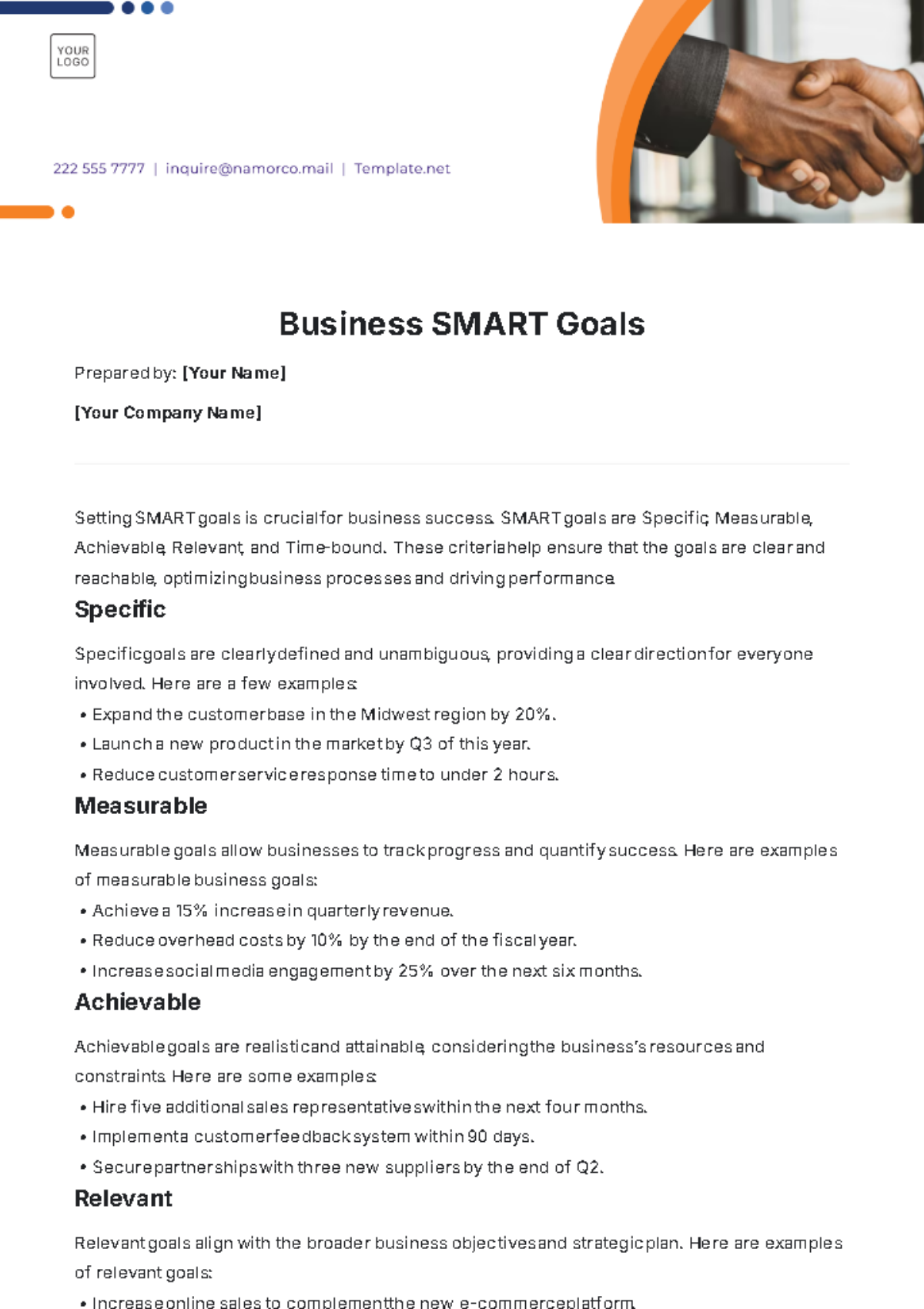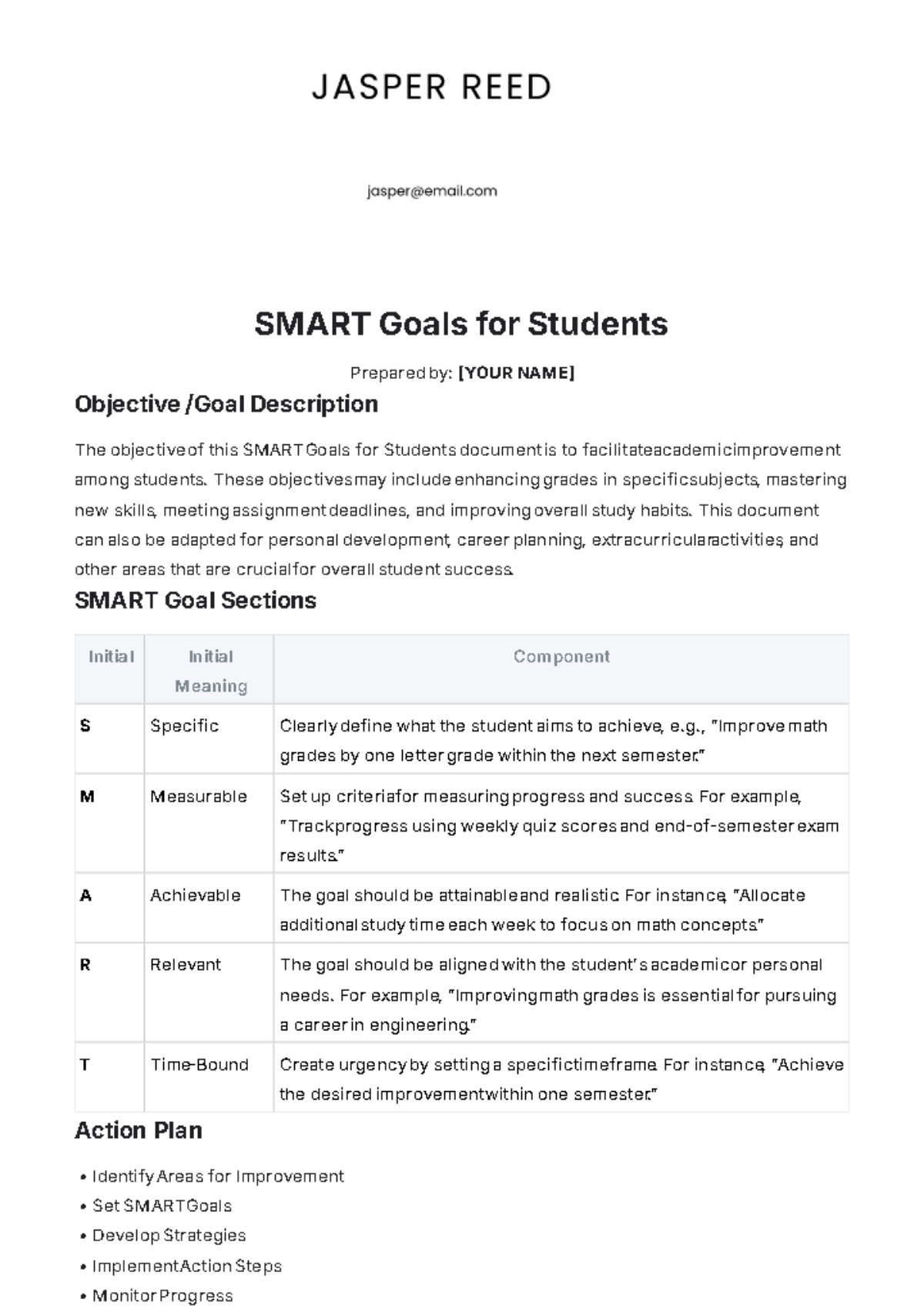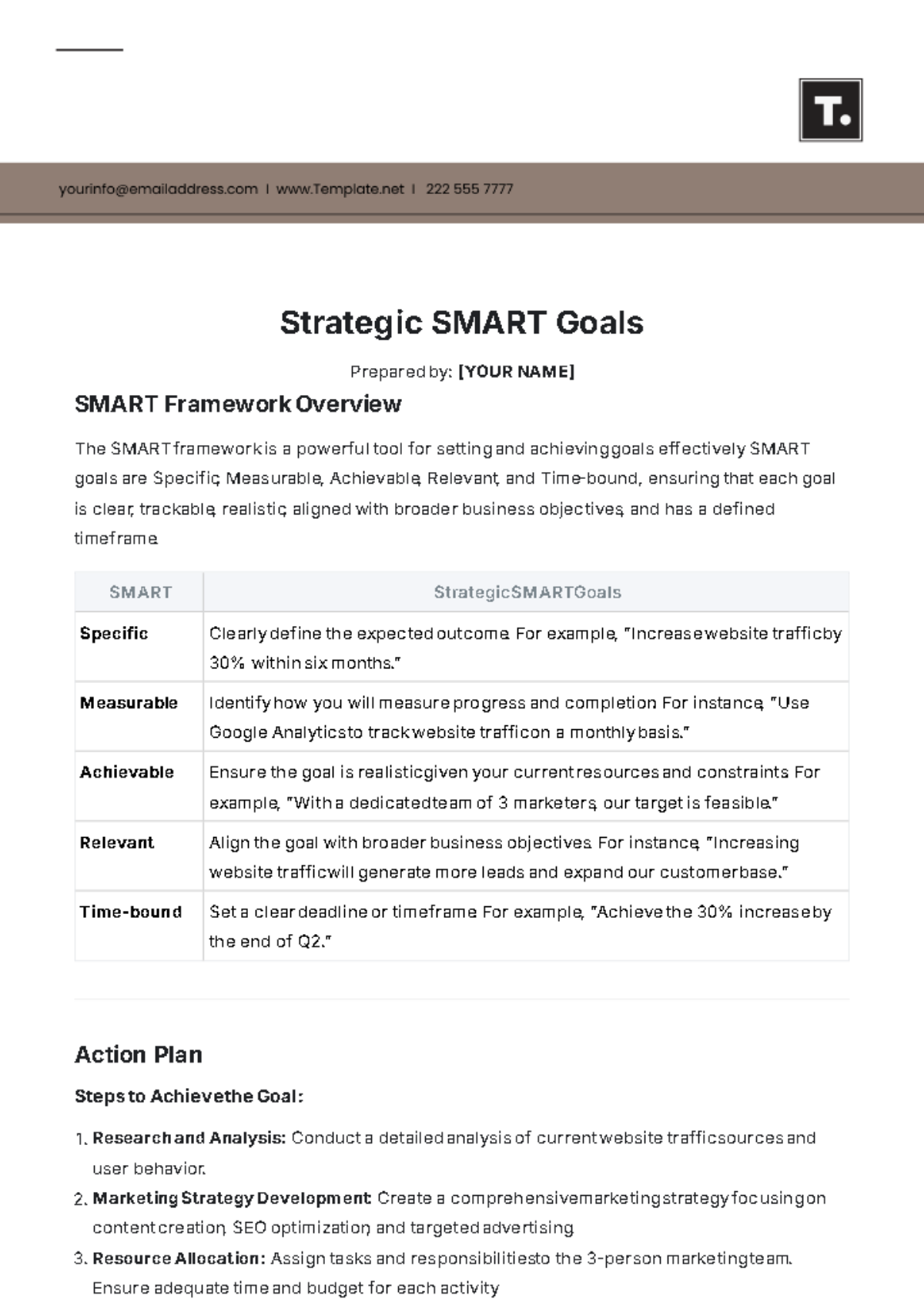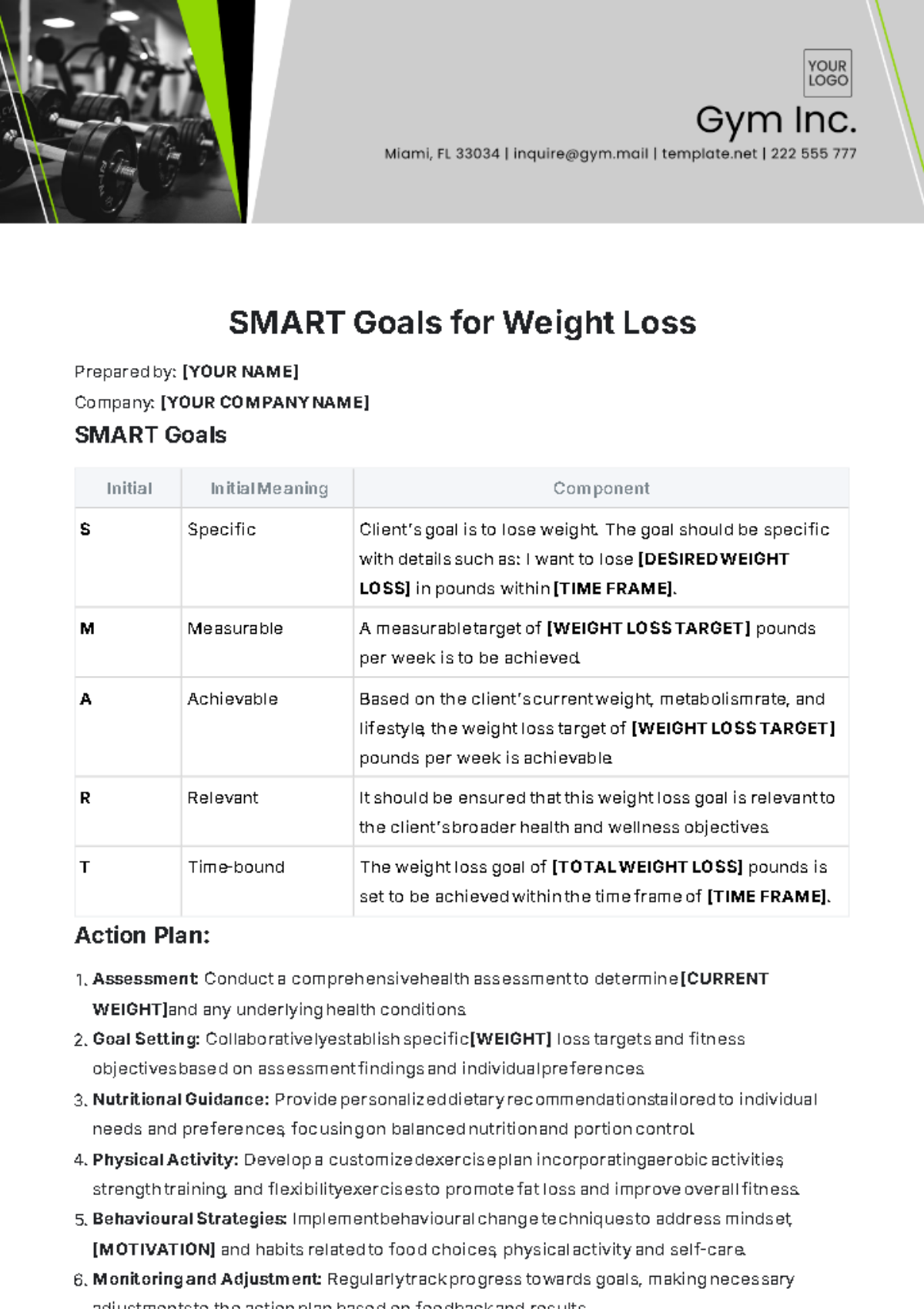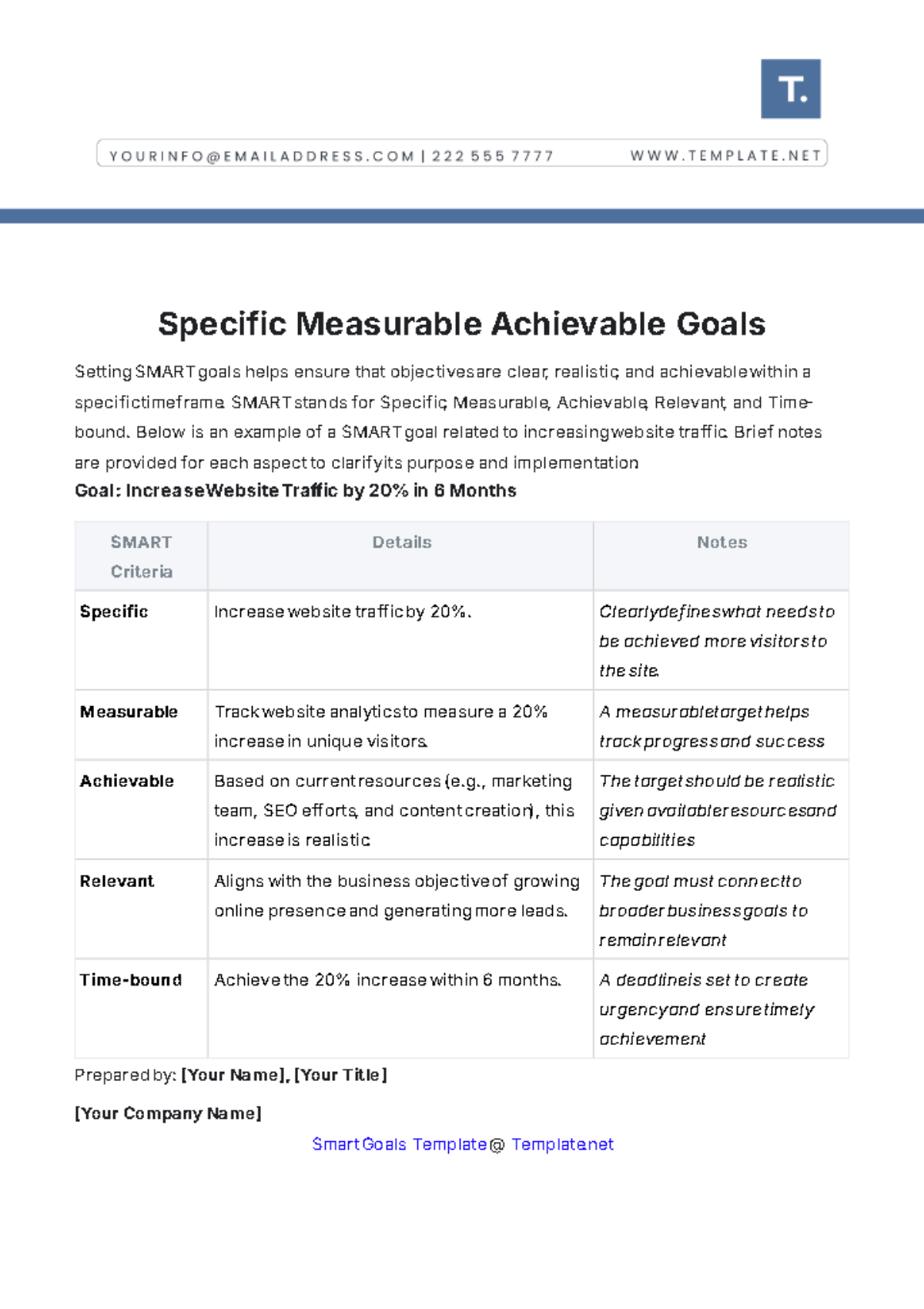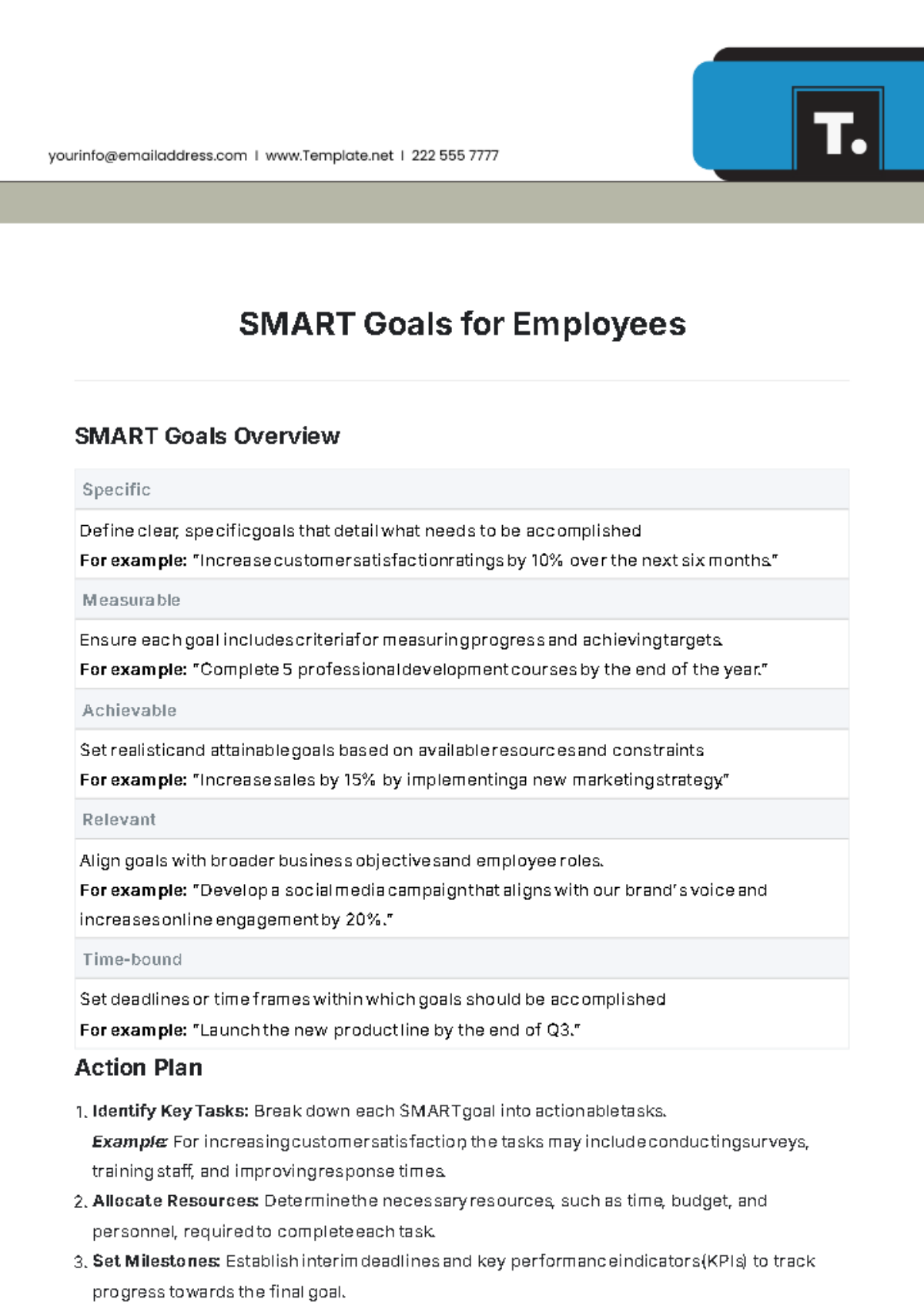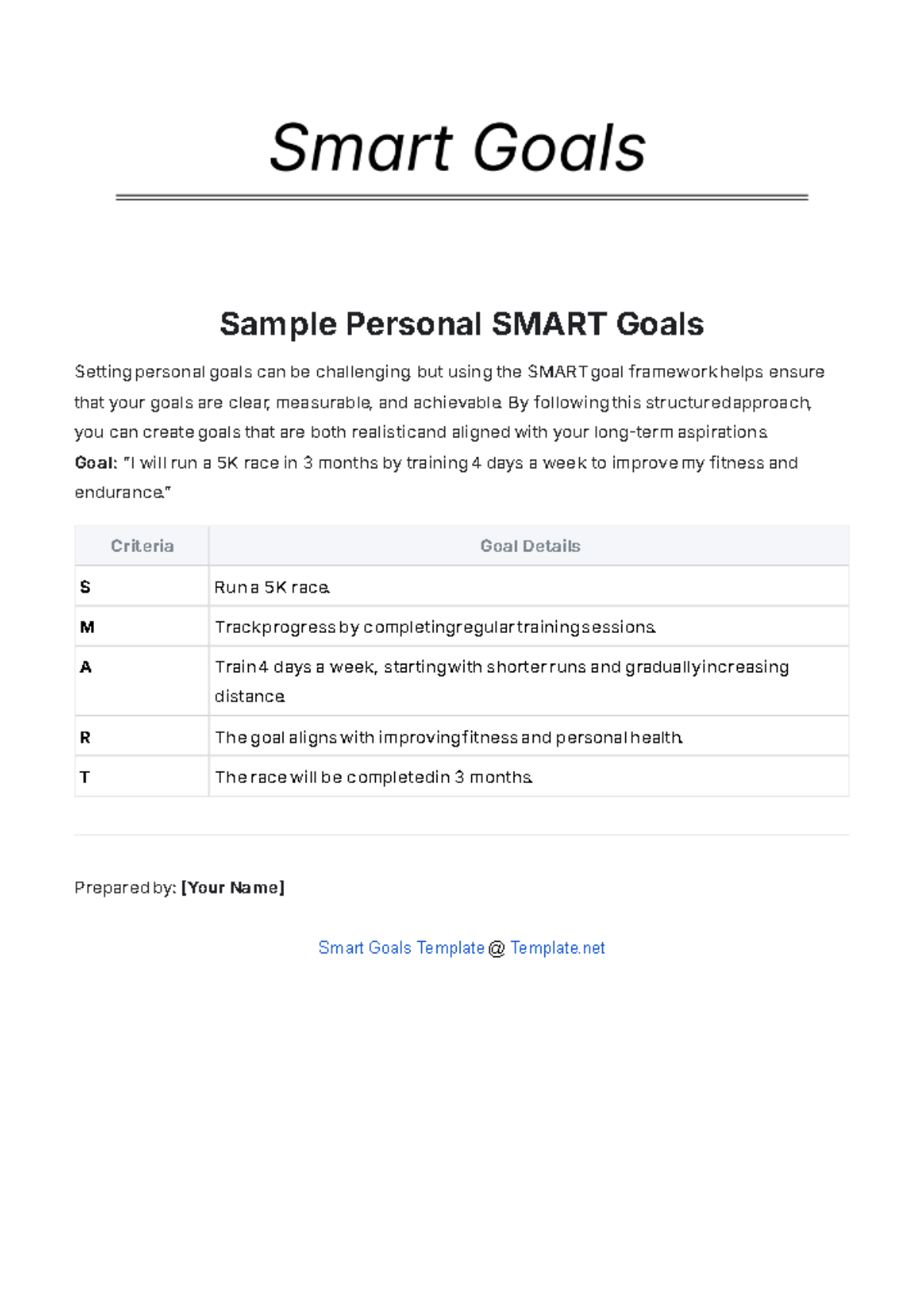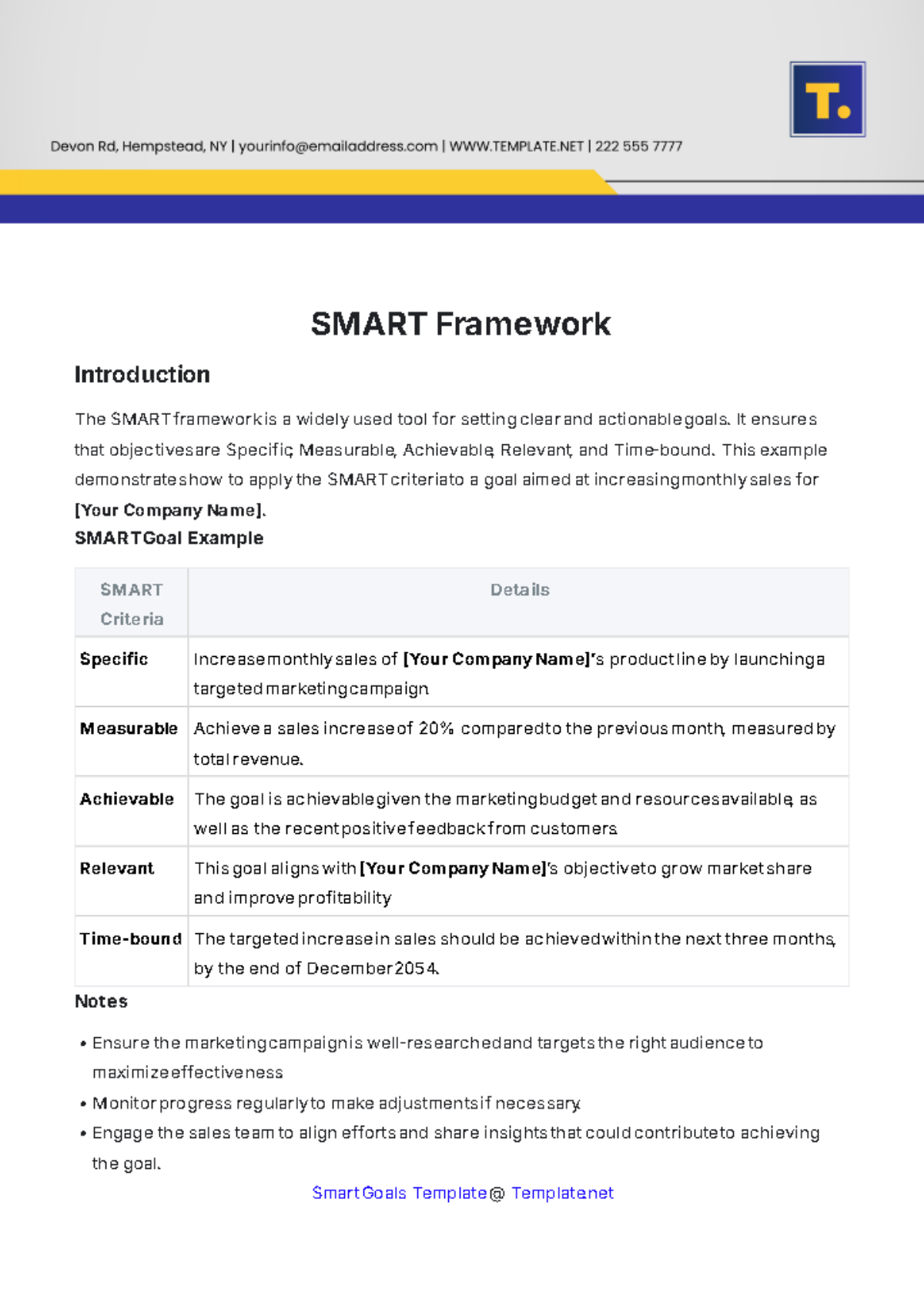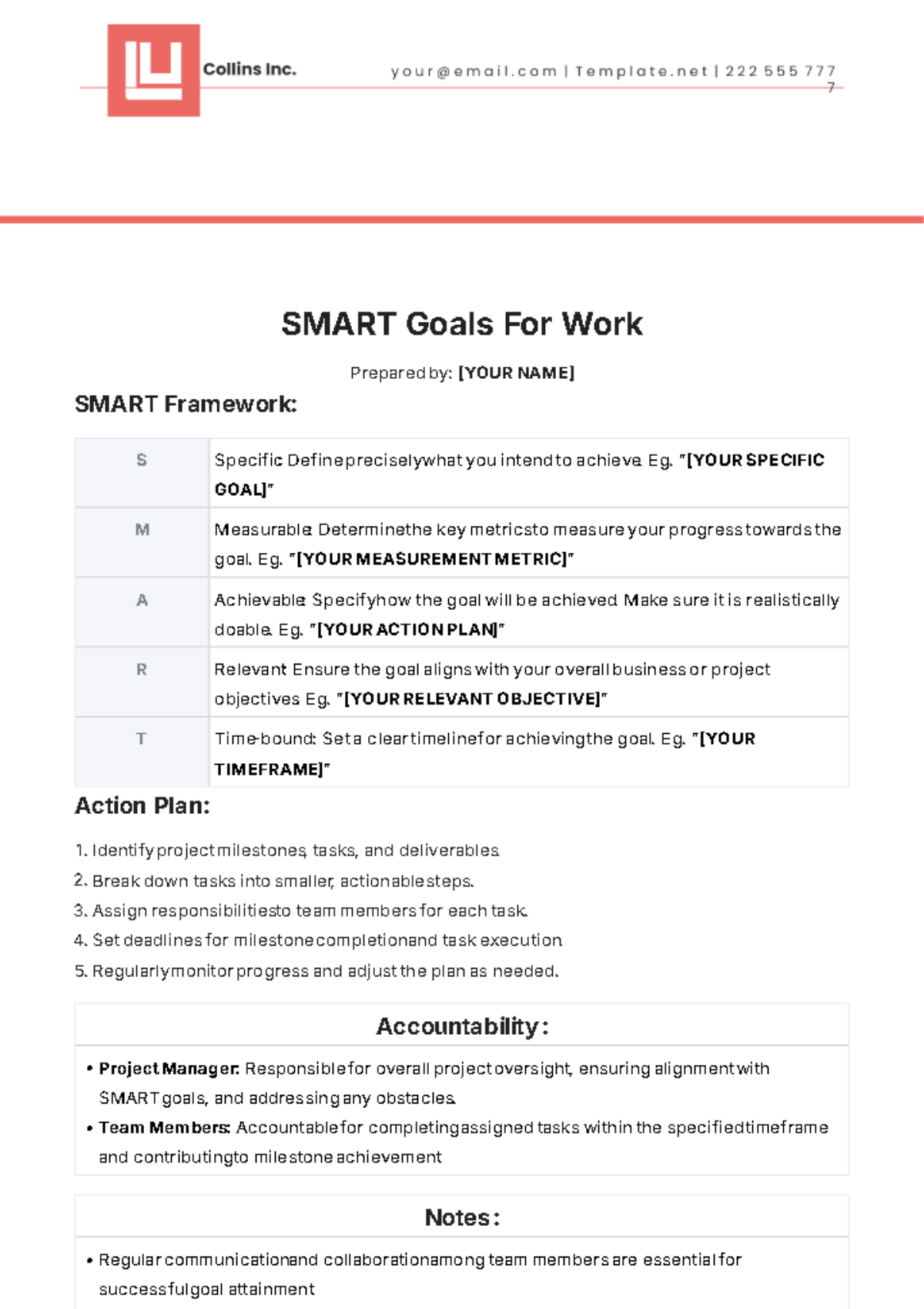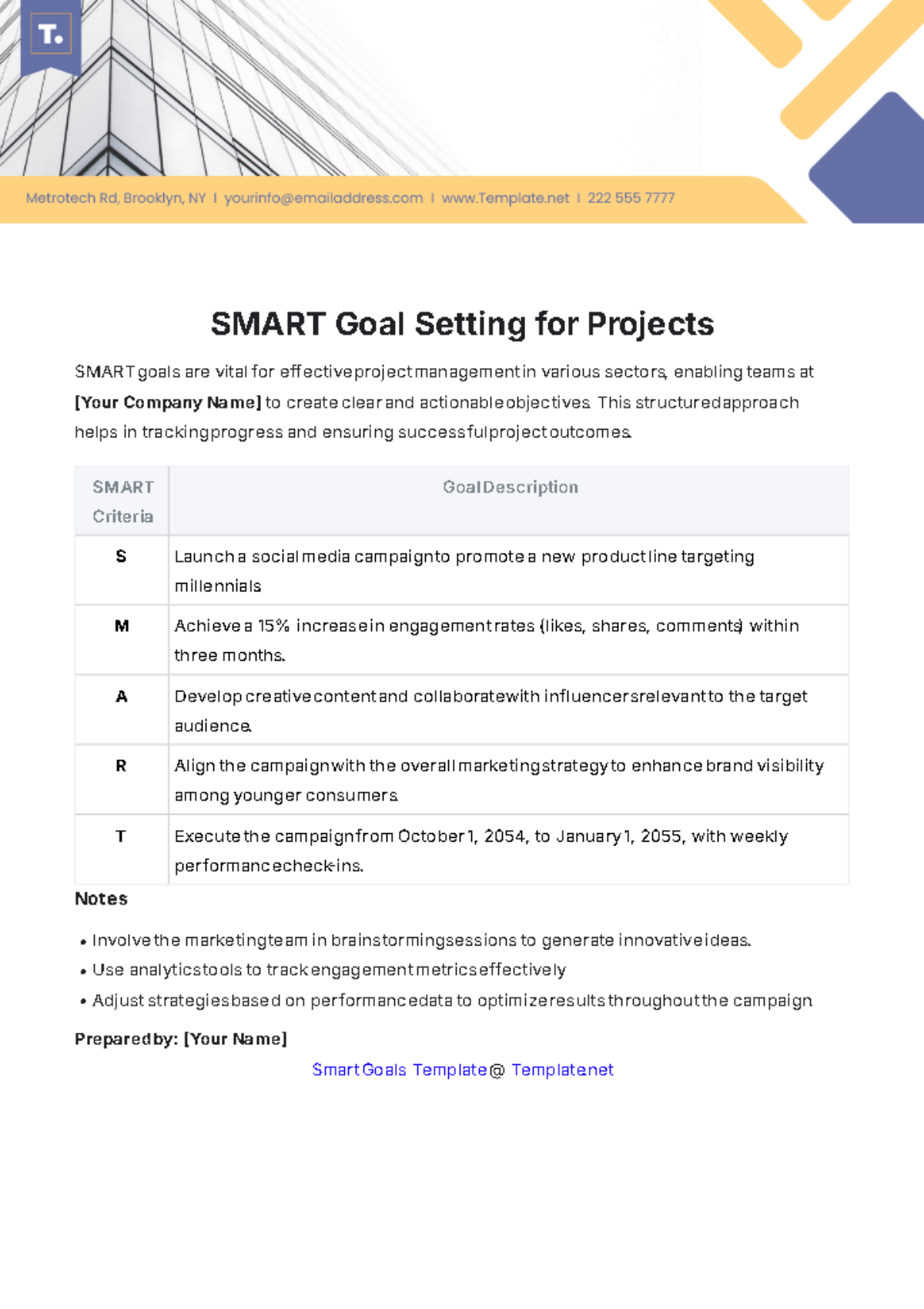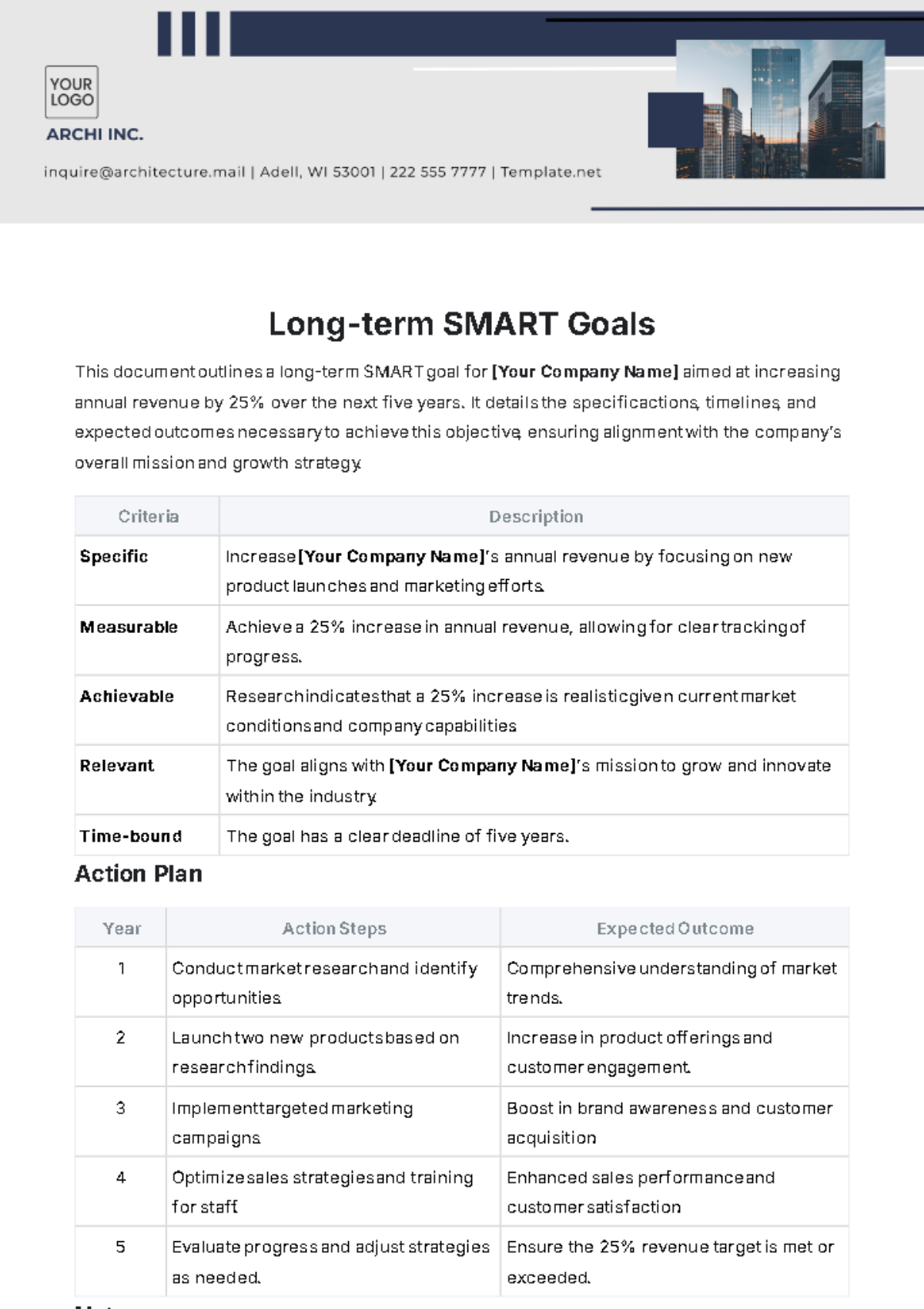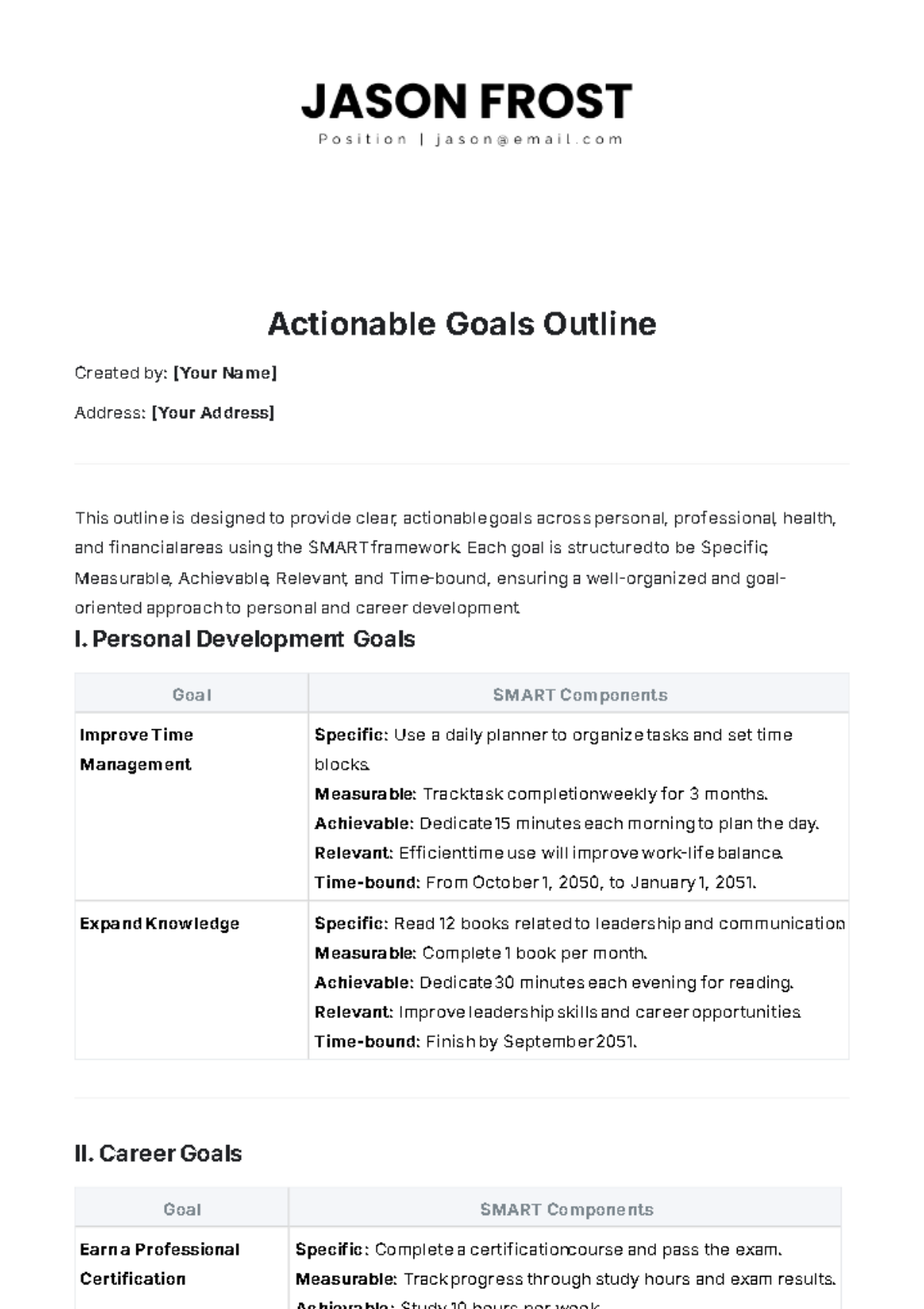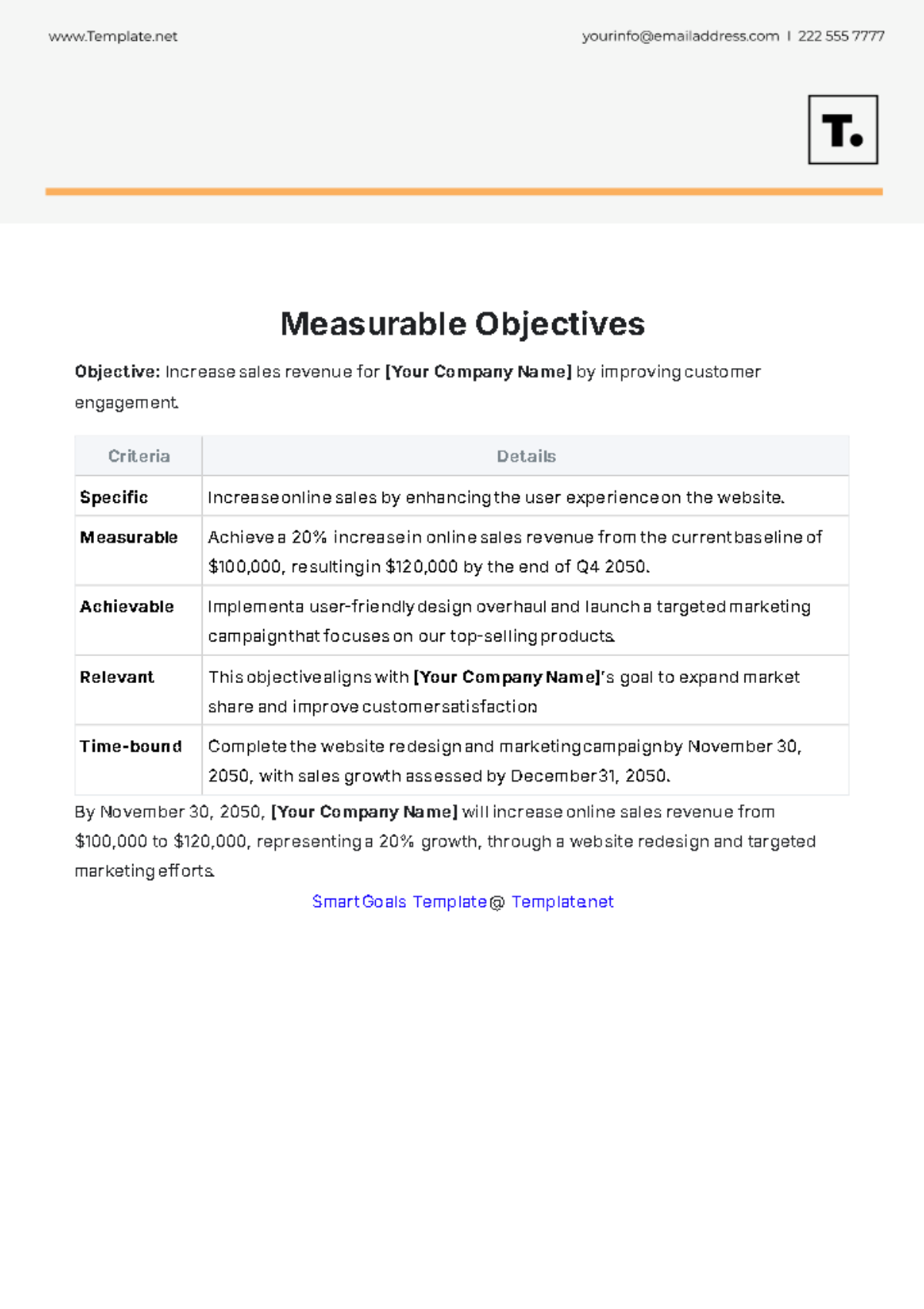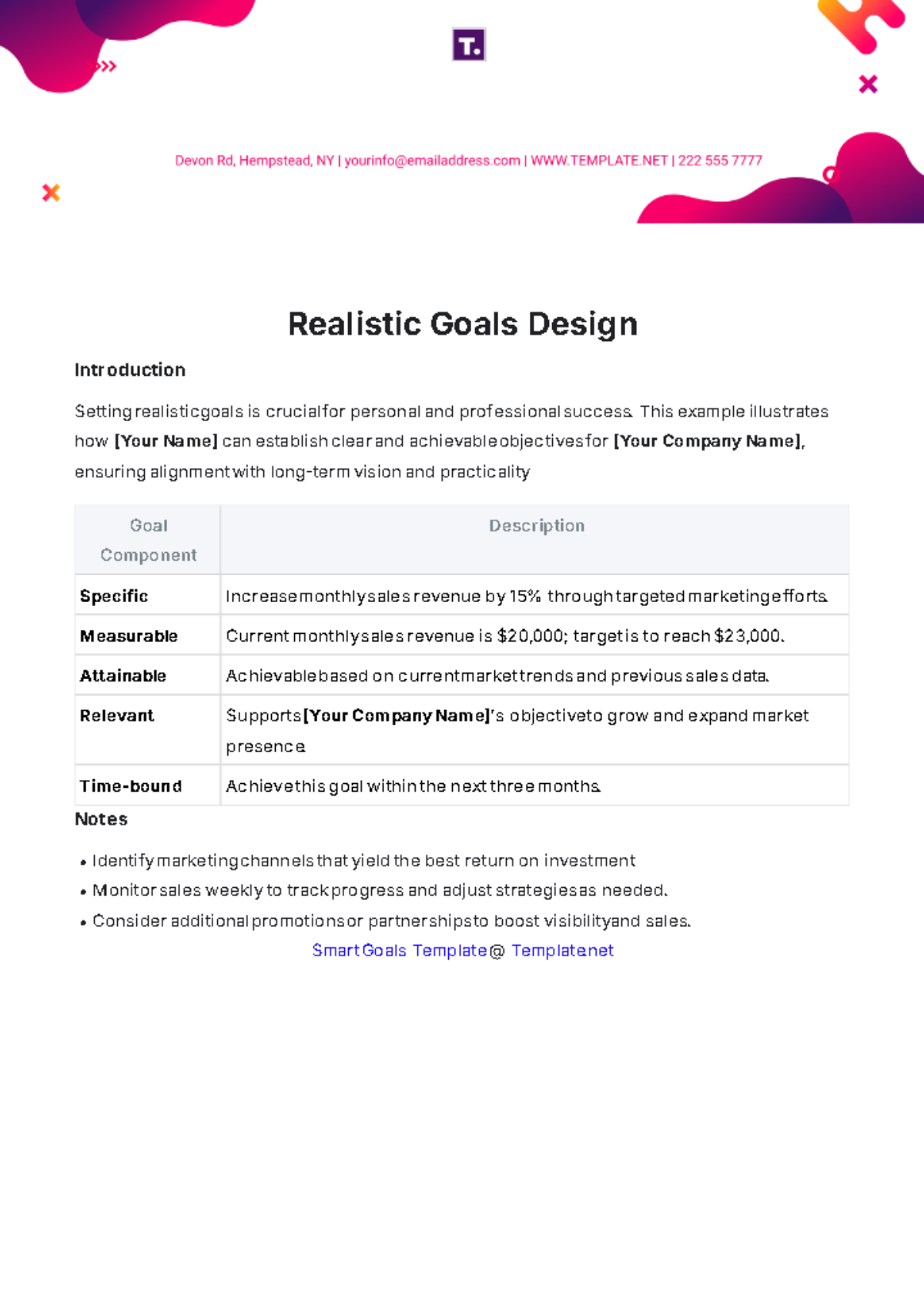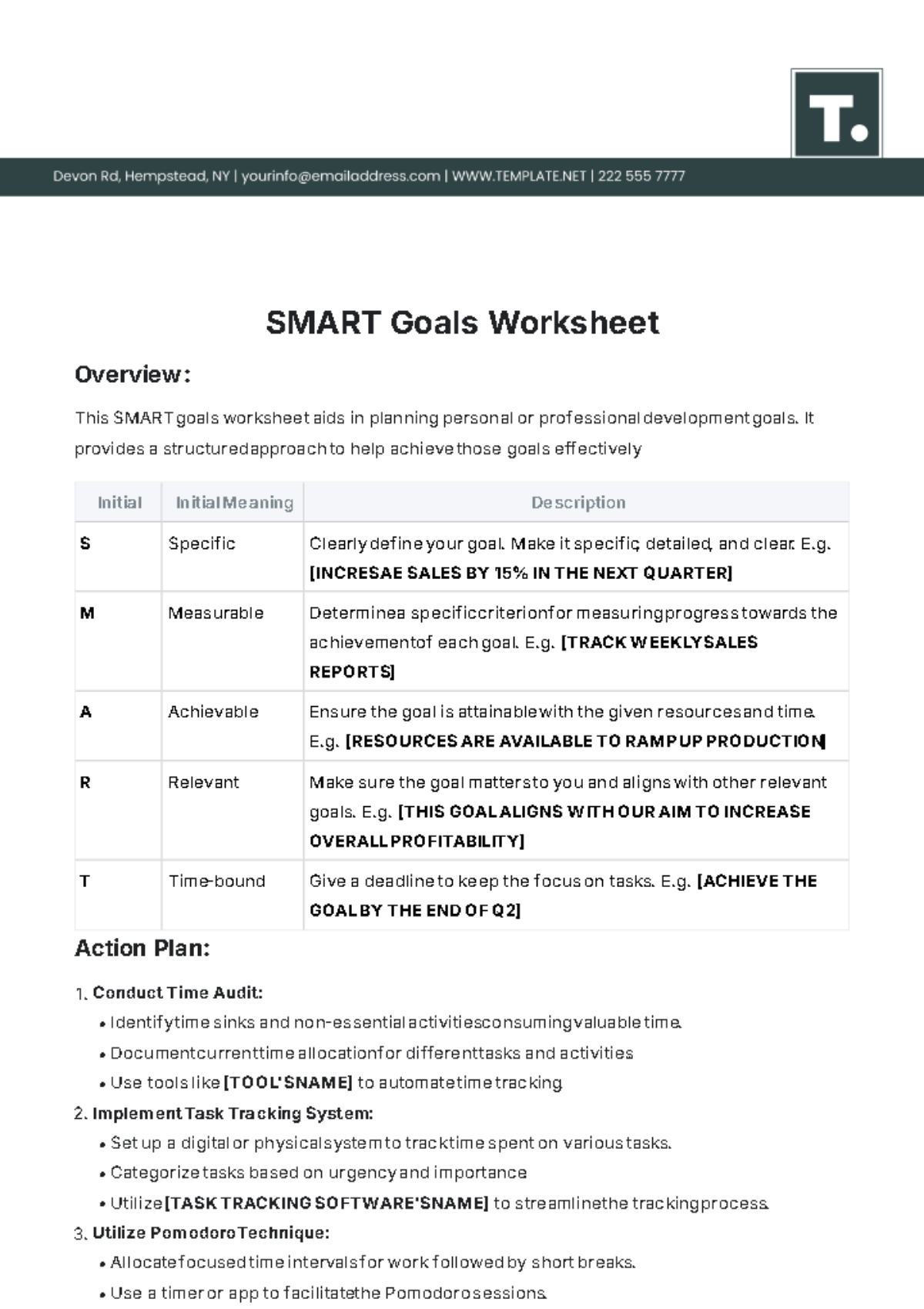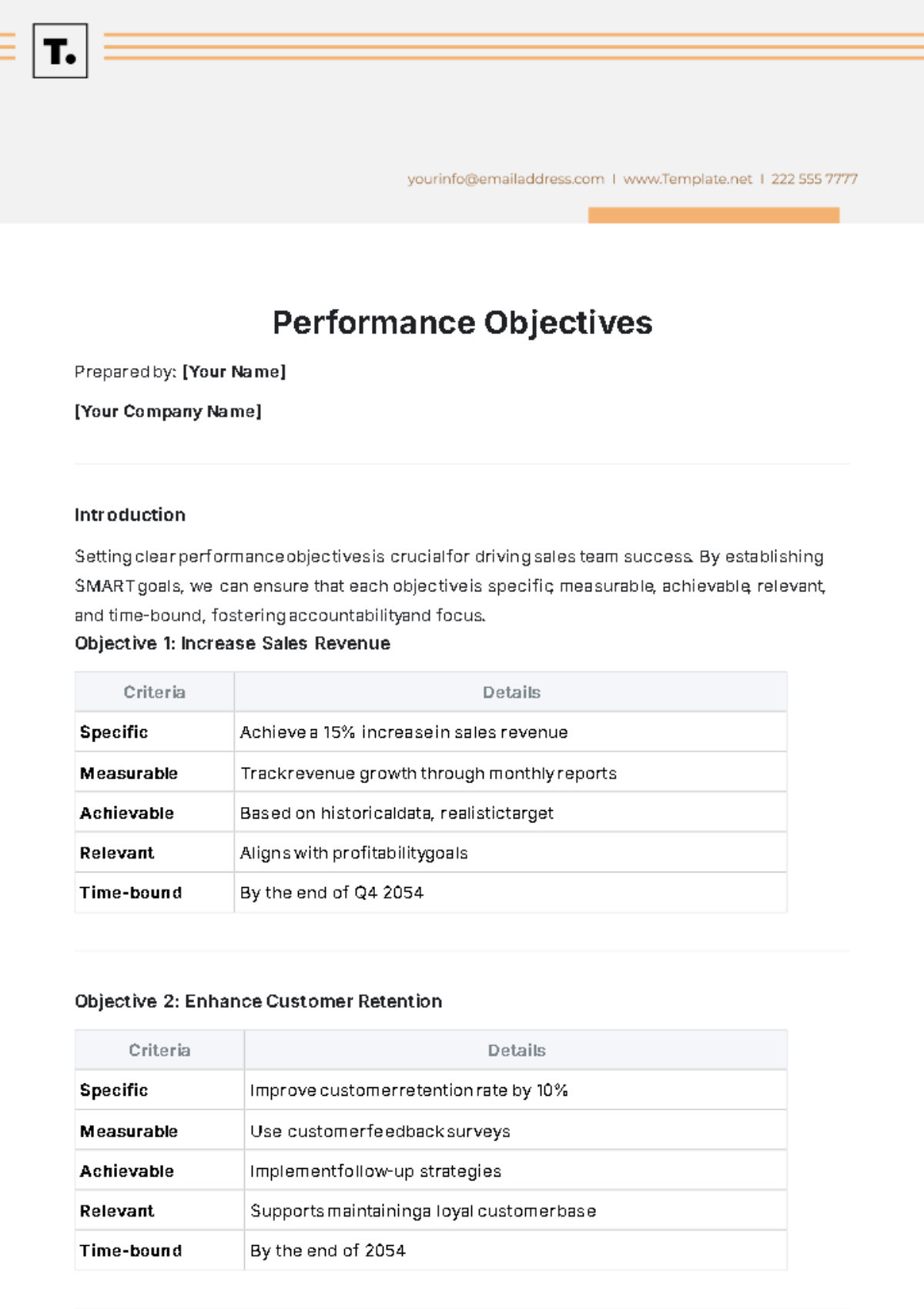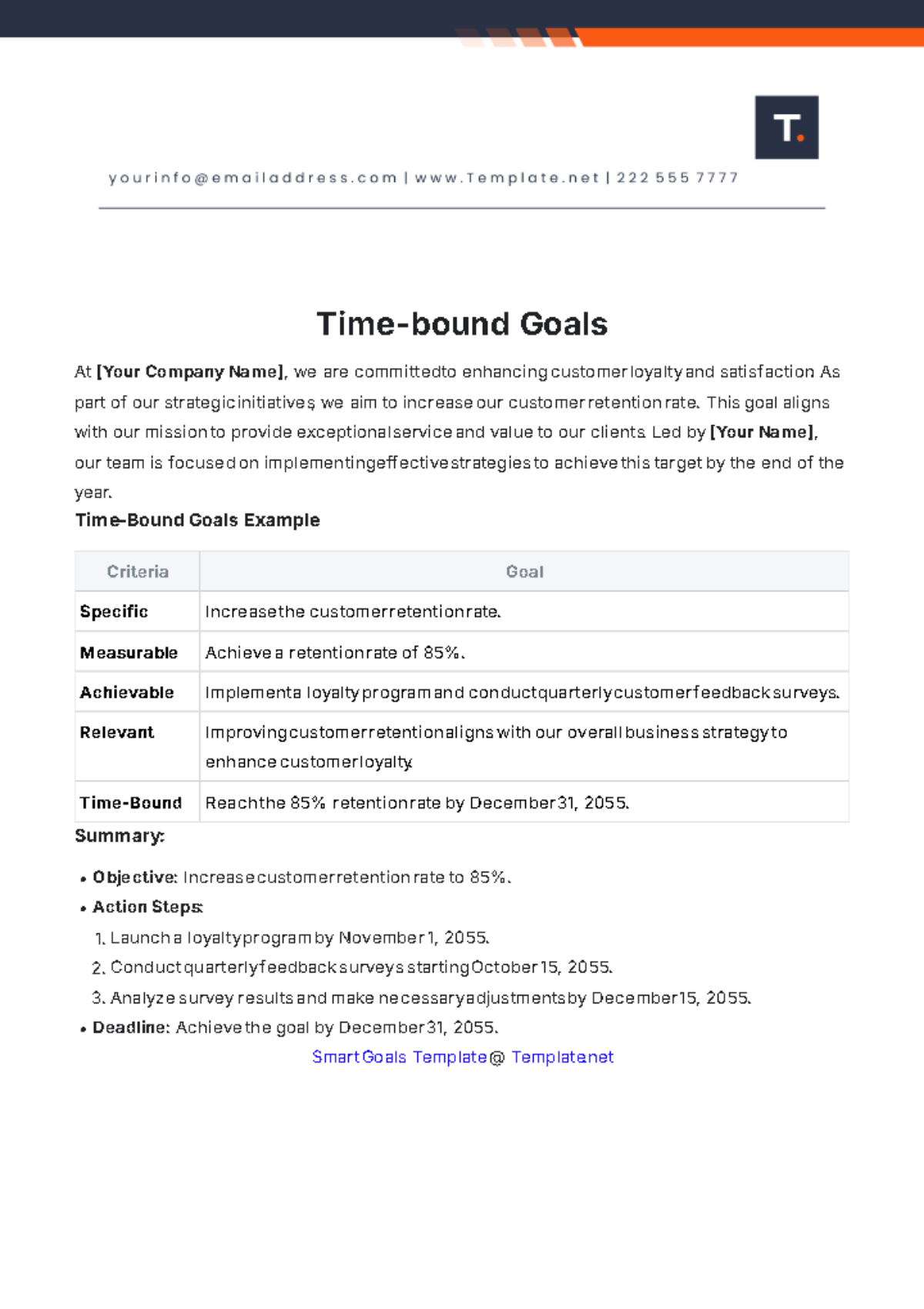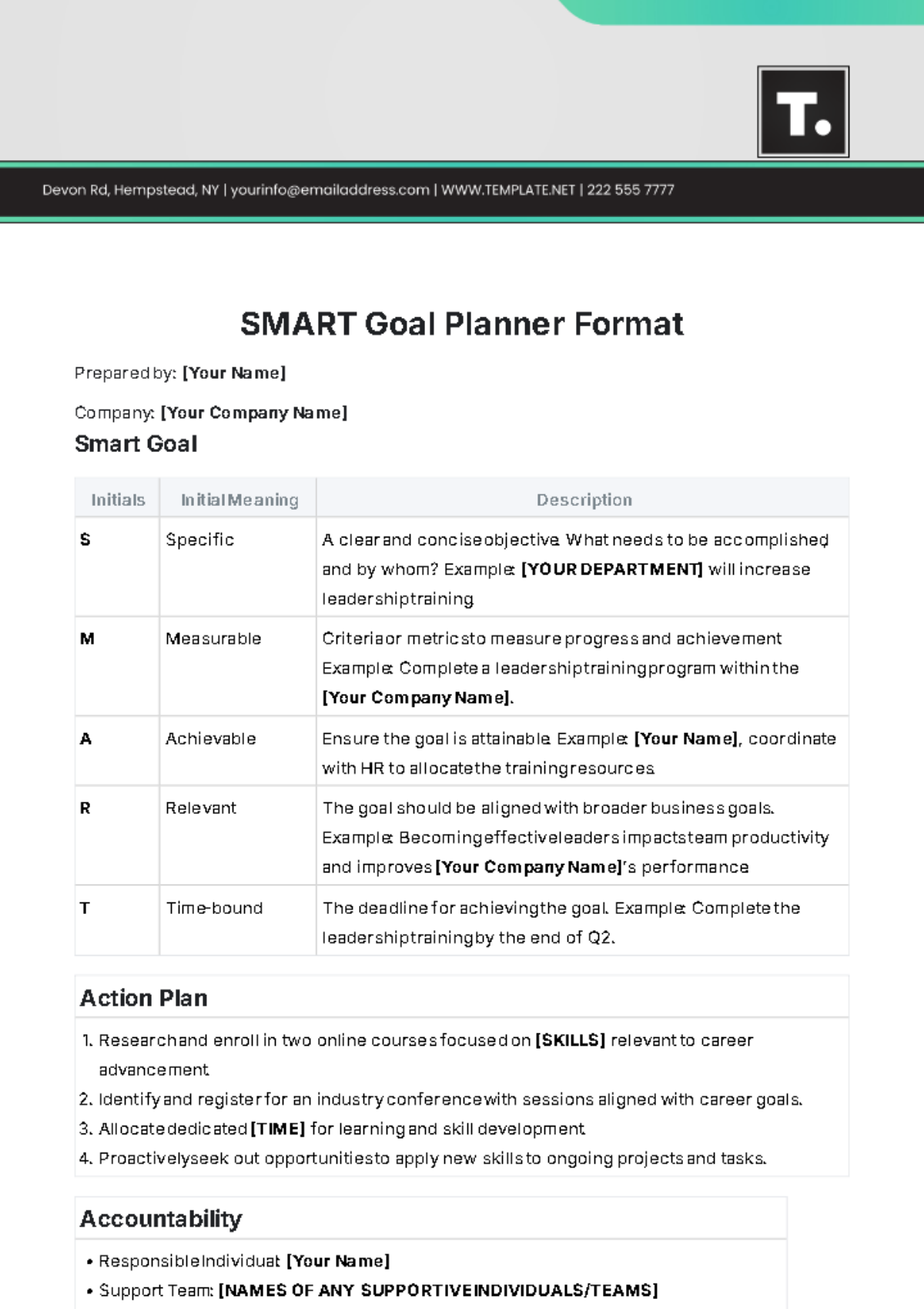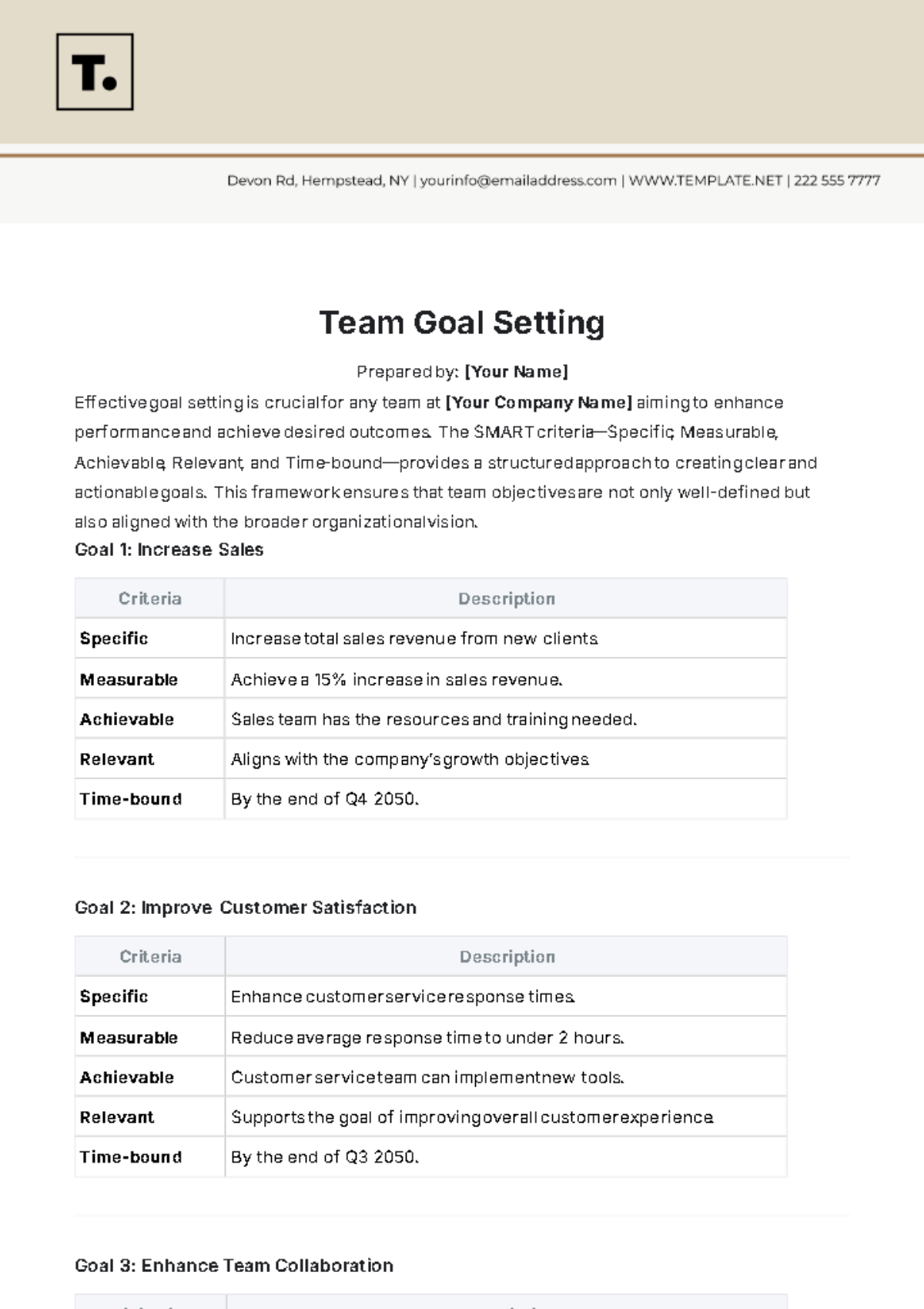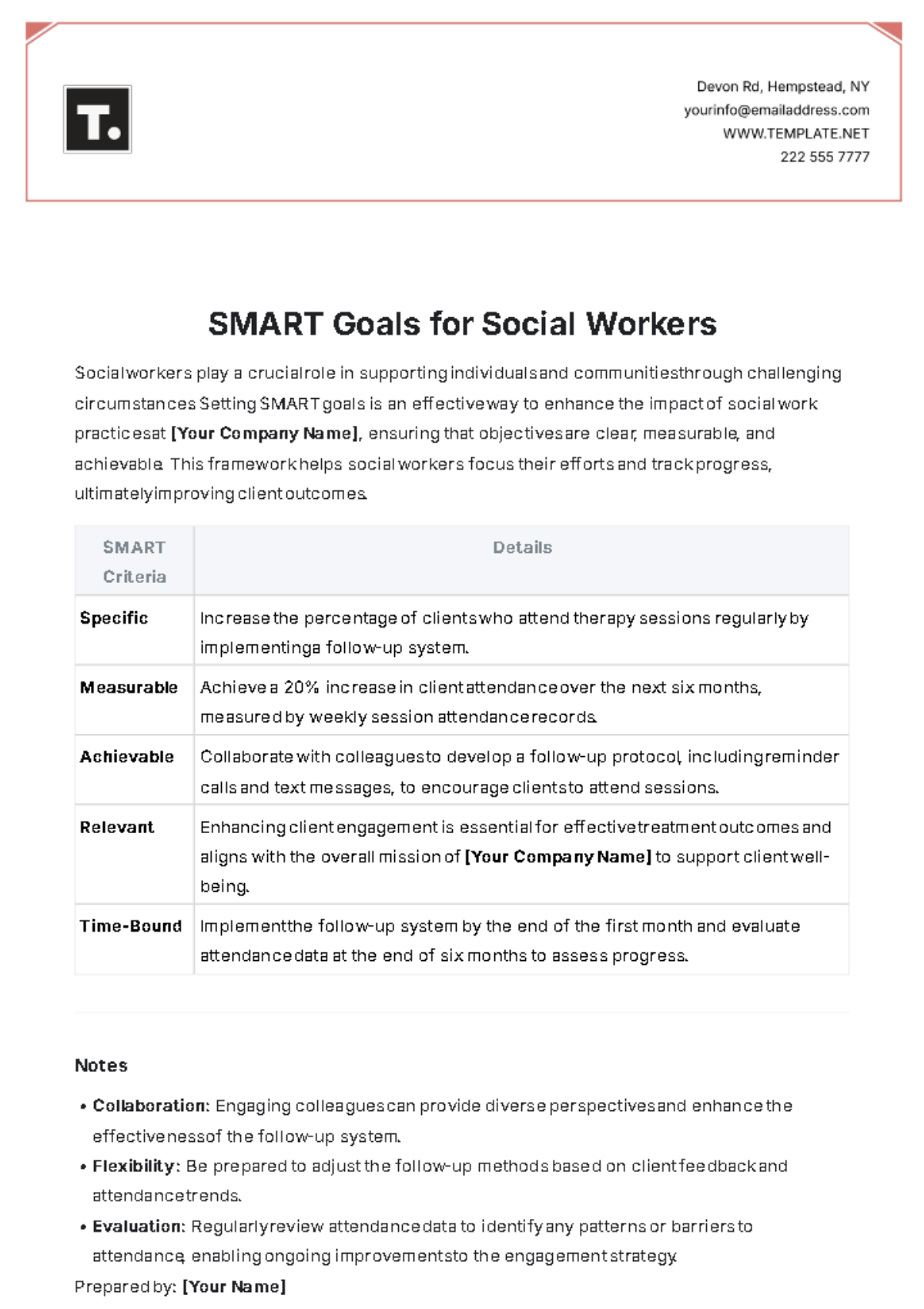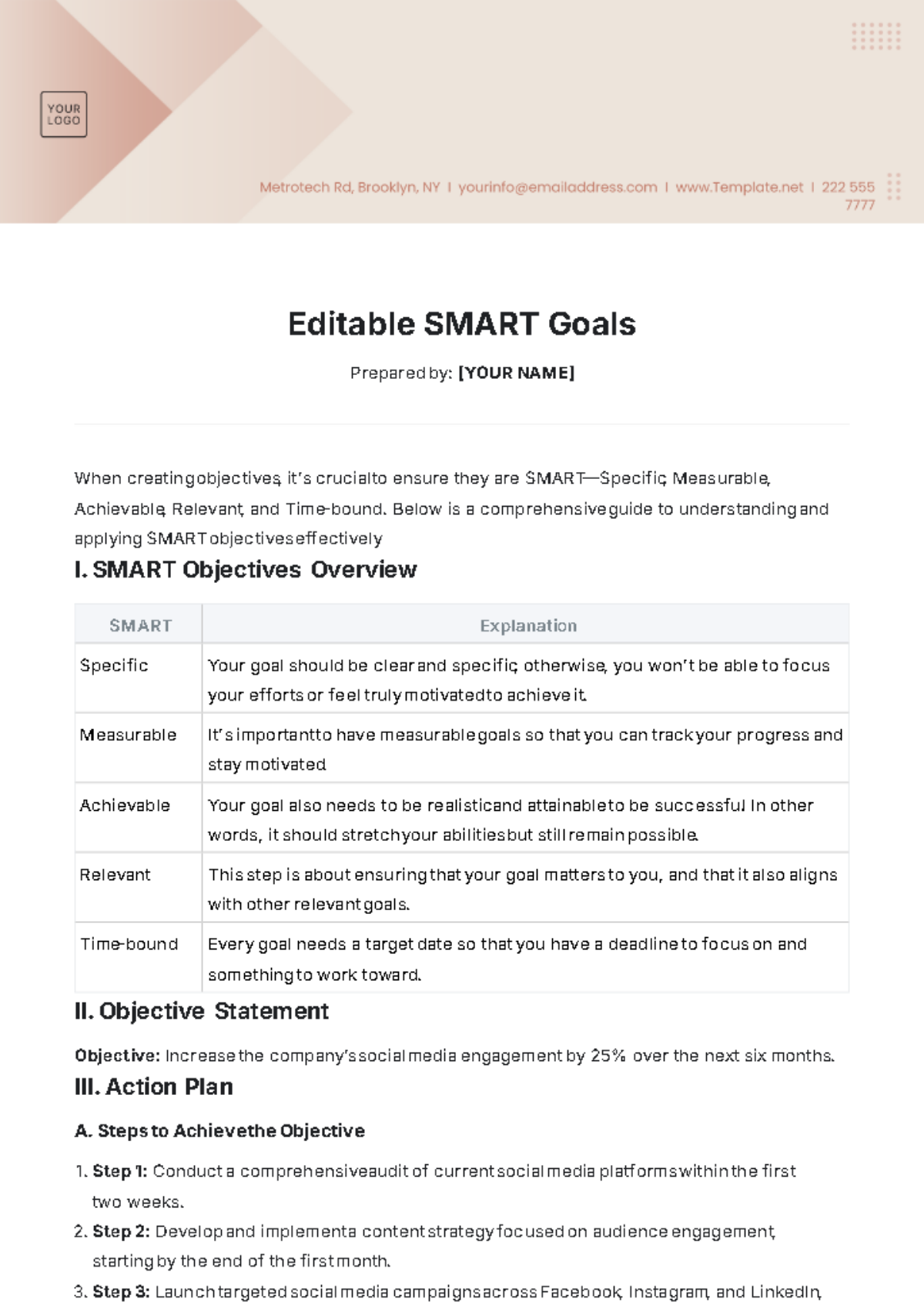Quarterly SMART Goals
Objective/Goal Description
OBJECTIVE: To increase sales revenue for [YOUR PRODUCT] in [YOUR REGION] by 20% within the next quarter.
SMART Goals
Initial | Initial Meaning | Description (Component) |
|---|
S | Specific | Increase sales revenue for [YOUR PRODUCT] by implementing targeted marketing campaigns and enhancing customer engagement strategies in [YOUR REGION]. This goal specifies the desired outcome and the actions needed to achieve it. |
M | Measurable | Track sales performance weekly using sales data to measure the increase in revenue generated from [YOUR PRODUCT] within [YOUR REGION]. Quantitative metrics will provide clear indicators of progress towards the 20% target. |
A | Achievable | Develop a realistic sales strategy by analyzing market trends and setting achievable targets based on historical data and market potential in [YOUR REGION]. |
R | Relevant | Increasing sales revenue for [YOUR PRODUCT] aligns with the company's objective of expanding market share and maximizing profitability. Enhancing sales performance in [YOUR REGION] contributes directly to overall business growth. |
T | Time-Bound | Set a deadline to achieve the 20% increase in sales revenue by the end of the quarter, providing a clear timeframe for focus and motivation. |
Action Plan
Identify Target Customer Segments:
Task: Conduct market research to identify potential customer segments in [YOUR REGION].
Deadline: [SPECIFIC DATE]
Implement Targeted Marketing Campaigns:
Task: Develop and launch marketing campaigns tailored to the identified customer segments to promote [YOUR PRODUCT].
Deadline: [SPECIFIC DATE]
Enhance Customer Engagement:
Task: Implement strategies to enhance customer engagement, such as personalized communication, loyalty programs, and customer feedback mechanisms.
Deadline: Ongoing
Monitor Sales Performance:
Task: Track sales performance weekly using sales data analytics to measure progress towards the 20% revenue increase goal.
Deadline: Ongoing
Accountability
Responsible: [YOUR NAME]
Support System: Sales team, Marketing team, Data Analytics team
Frequency of Progress Reviews: Weekly for sales performance review; bi-weekly for marketing campaign assessment.
Method of Review: Review of sales reports and marketing campaign metrics; discussions with sales and marketing teams to evaluate progress and identify areas for improvement.
Notes
Initial Notes: Start with baseline sales data and customer engagement metrics to establish a reference point for tracking progress.
Adjustments: Be prepared to adjust marketing strategies, customer engagement initiatives, and sales tactics based on ongoing performance reviews and market feedback.
Smart Goals Templates @ Template.net


